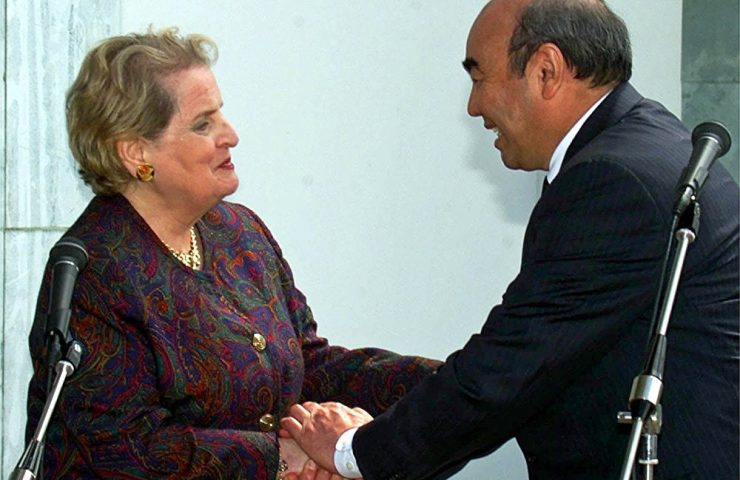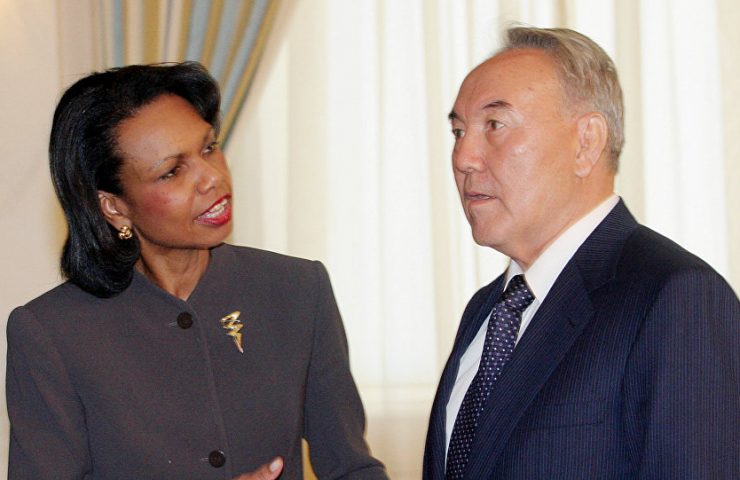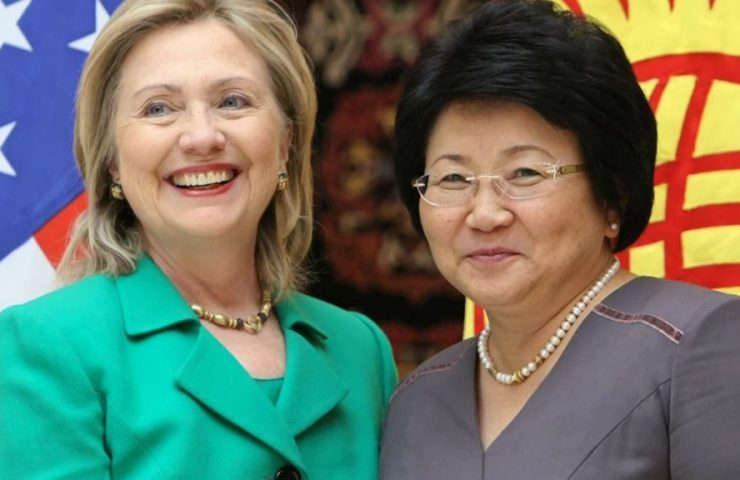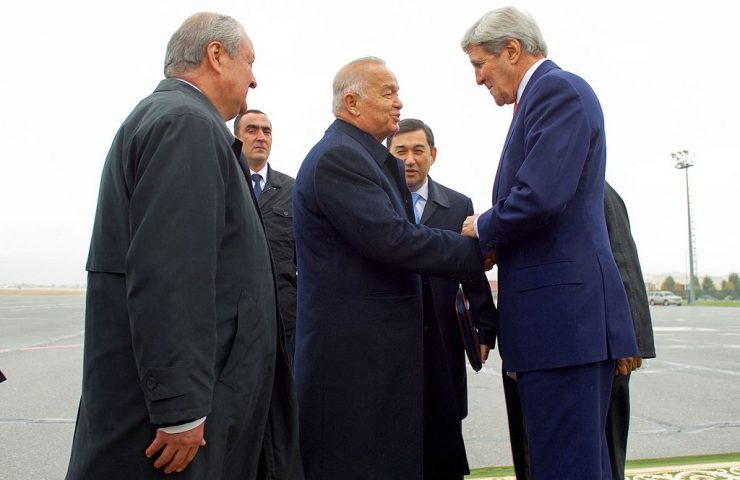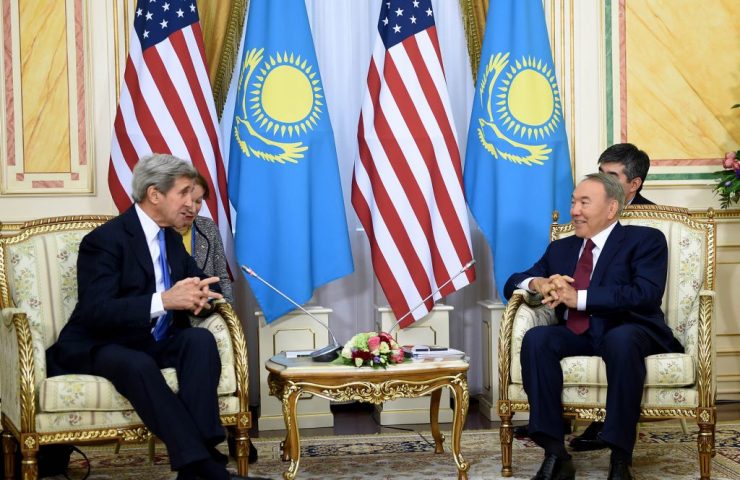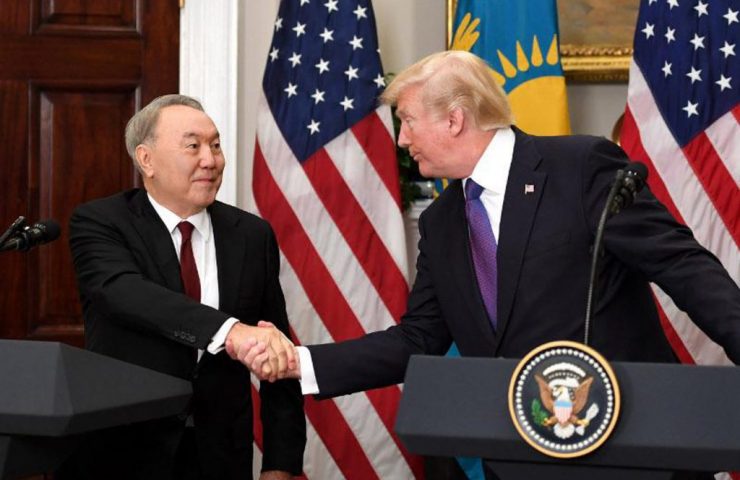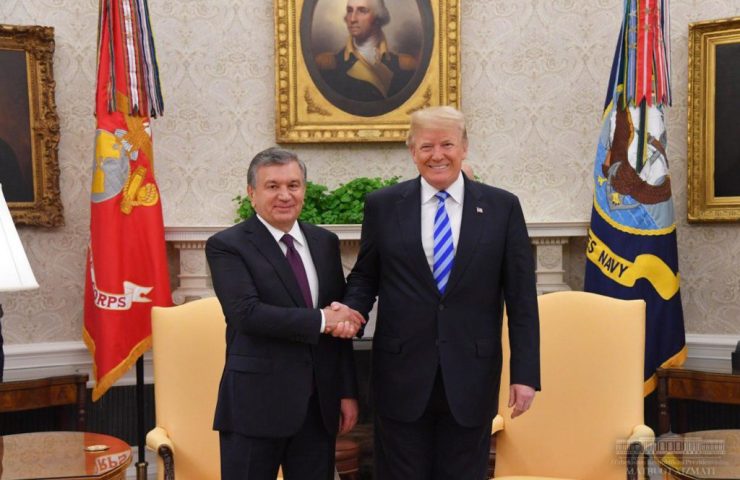«If the previous visits of the Secretaries of State were to all the capitals of the Central Asian region, now Pompeo plans to visit only Nur-Sultan and Tashkent, which indicates an obvious shift of emphasis towards regional leaders», – mentioned Ainura Akmatalieva, an expert on foreign policy issues of Central Asian states, in her article for CABAR.asia.
Follow us on Facebook

In early February 2020, US Secretary of State Mike Pompeo is expected to visit the Central Asian region. After the visit of British, Ukrainian and Belarusian capitals, Pompeo plans a visit to Nur-Sultan, where he will meet with incumbent President Kassym-Jomart Tokayev, with the first president Elbasy Nursultan Nazarbayev and Foreign Minister Mukhtar Tleuberdi. Then, in Tashkent, the US Secretary of State will meet with President Shavkat Mirziyoyev and Foreign Minister Abdulaziz Kamilov. This visit to the region will end with participation in a meeting of the US+5 forum, where Pompeo will meet with foreign ministers of all five Central Asian republics to discuss peace and security in Afghanistan. Wherein, the upcoming visit seems interesting and intriguing in the context of initiating a new US strategy on Central Asia.
Previous visits to the region
Due to the fact that none of the US presidents had previously been in the Central Asian region on an official or state visit, the highest levels are the only visits of Vice Presidents Albert Gore in 1993 and Dick Cheney to Kazakhstan in 1996. Other important visits include regional tour of US Secretaries of State with a five-year interval:
- 2000 – Madeleine Albright;
- 2005 – Condoleezza Rice;
- 2010 – Hillary Clinton;
- 2015 – John Kerry
and finally, the expected visit of Mike Pompeo in 2020. The next visit, most likely, will probably take place only in 2025, which certainly enhances the interest and expectations of regional elites to each visit of state secretaries.
It is noteworthy that if the previous visits of Secretaries of State were to all the capitals of the Central Asian region, then Pompeo plans to visit only Nur-Sultan and Tashkent, which indicates an obvious shift in emphasis towards regional leaders, where the significance of Tashkent and Nur-Sultan in very deed becomes strategic.
At the same time, at the bilateral level, in the fields of various forums, periodic meetings of officials take place. For instance, in 2018, Nursultan Nazarbayev and Shavkat Mirziyoyev made official visits to Washington, where Kazakhstan signed agreements for 7 billion US dollars. Following the visit, Mirziyoyev signed the first-ever five-year plan of military cooperation in the history of relations between the two countries, followed by mutual visits of the military servants. Uzbekistan mainly demonstrates interest in obtaining military-technical cooperation, military education and training. At the same time, the parties proclaimed, “the beginning of a new era of strategic partnership”, which testifies to the role of Tashkent as a driver for activating the policy of global powers.
USA plus five
The United States also uses the C5 + 1 diplomatic cooperation platform to discuss issues of mutual interest proposed by former Secretary of State John Kerry in 2015. Researchers note US interest in using Central Asia as a tool in dialogue with Afghanistan, and for the states of the region this is an opportunity for geostrategic balancing between Chinese and Russian influence. In 2015, issues of cooperation in the field of security, the economy, and the effects of climate change were discussed in Samarkand.[1] In 2016, the parties agreed on substantive cooperation on five programs in the fields of security, economics and business, as well as ecology.
- Global Counterterrorism Forum (GCTF) Regional Dialogue: The GCTF Regional Dialogue will seek to counter the challenges of foreign terrorist fighters and radicalization to violence in Central Asia;
- Central Asia Business Competitiveness (CABC): The CABC project will seek to make it easier for businesses in Central Asia to increase exports and enter new markets;
- Transport Corridor Development (TCD): The TCD project will aim to reduce the cost and time of moving goods across borders in Central Asia, as well as improve the quality of transport and logistics services throughout the entire region.
- Power the Future: will help energy sector policymakers and mid-level staff in their efforts to scale up renewable energy throughout Central Asia;
- Supporting National and Regional Adaptation Planning: this project will seek to increase the capacity of Central Asian states to plan for adaptation against the impacts of climate change.[2]
Before Mike Pompeo’s visit, an important statement was made regarding the readiness of the new strategy of US President Donald Trump regarding Central Asia, which has not yet been announced, however, there are already certain shifts in the US vision of the Central Asian region.
A significant shift is the recognition of Uzbekistan and Kazakhstan as regional leaders, on which regional integration issues mainly depend, as well as the degree of effectiveness of US “strategic competitors” projects as Russian initiatives of the EAEU and the Collective Security Treaty Organization, the Chinese “Belt and Road” initiative. In Trump’s 2017 National Security Strategy, these two states were designated as “revisionist states” that pose a threat to US national interests. Prevention of the unambiguous dominance of any single power, not only in the Central Asian region, but also in other political spaces of the world, is consistent with Washington’s strategic goal. Therefore, the expert community and representatives of the US political establishment constantly emphasize that they respect the independence, sovereignty and territorial integrity of the Central Asian republics.[3] During the briefing, State Department officials emphasized the US desire to support the integration of Kazakhstan and Uzbekistan into the global economy so that they are not dependent on certain states.[4]
New “old” strategy
Within the framework of the American project “The New Silk Road”, initiated by ex-Secretary of State Hillary Clinton, it was supposed to diversify the partners of Central Asia. This was to happen by actualizing the idea of ”Greater Central Asia” (which includes Afghanistan) at the expense of South Asian countries, through the energy projects CASA-1000, TAPI and the active role of India. At the same time, it was expected that the states of the region should not only be active in stabilizing Afghanistan, but also allocate feasible financial resources for the implementation of projects with minimal participation and a share of Washington.
The new US strategy for the region is likely to be an updated version of the New Silk Road initiative. Central Asian states continue to be considered in the US Department of State within the framework of the Bureau for South and Central Asian States, which indicates further activation of the Greater Central Asia idea.
However, it is possible that the center of the integration model will not be Afghanistan as in the original version, but Tashkent as a more confident and stable actor. At the same time, the separation of Uzbekistan as a leader or a key state is explained by Tashkent’s desire to remain outside the military-political blocs and issues of deploying military bases of other states on its territory, as well as Shavkat Mirziyoyev’s policies pursued by openness and an active position on the Afghan question. At the end of January of the current year, Mirziyoyev announced his refusal to join the EAEU, but nevertheless announced his intention to obtain observer status in this organization. In this context, the United States will probably actively promote Tashkent’s WTO membership, as well as expand economic cooperation. Recently, military-political cooperation between the United States and Uzbekistan has intensified, and Kazakhstan provides an alternative route for delivering goods to Afghanistan through the ports of Kuryk and Aktau.
Conclusion
Washington will traditionally maintain its soft policy in all the republics of Central Asia, which is regarded as more effective than the soft tools of other actors, with increased support for the participation of young leaders and women in politics, as well as educational initiatives and media support. At the same time, updating and providing assistance in the prevention and work with the consequences of natural disasters and the effects of climate change will receive wider development and updating.
At the same time, the United States cannot challenge the economic impact of China, which has real large-scale investments like the Silk Road Fund (40 billion US dollars) and the Asian Infrastructure Project Bank (100 billion US dollars) in the medium term. On the other hand, Russia’s military-political role in the Central Asian region, where the three republics are members of the CSTO, two of which have military bases. In this context, recognizing its real strategic opportunities and limitations, the United States will try to support, on the one hand, the active role of the EU countries, Japan, South Korea, Turkey, Saudi Arabia, and India in the region in order to support “multi-vector nature”, and on the other hand, to support the participation of the Central Asian republics in the global multi-format institutions of the liberal world order.
This material has been prepared as part of the Giving Voice, Driving Change – from the Borderland to the Steppes Project project. The opinions expressed in the article do not reflect the position of the editorial board or donor.
[1] Joint projects of the USA and Central Asia (C5 + 1). https://kg.usembassy.gov/u-s-central-asia-c51-joint-projects/
[2] Joint projects of the USA and Central Asia (C5 + 1). https://kg.usembassy.gov/u-s-central-asia-c51-joint-projects/
[3] Press statement. Secretary Pompeo’s travel to Ukraine, Belarus, Kazakhstan, Uzbekistan and Cyprus. December 30, 2019 // https://www.state.gov/secretary-pompeos-travel-to-ukraine-belarus-kazakhstan-uzbekistan-and-cyprus/
[4] Senior State Department Officials Previewing Secretary Pompeo’s Travel to Ukraine, Belarus, Kazakhstan, Uzbekistan, and Cyprus. Special briefing. Office of the spokesperson, December 30, 2019. \\ https://www.state.gov/senior-state-department-officials-previewing-secretary-pompeos-travel-to-ukraine-belarus-kazakhstan-uzbekistan-and-cyprus/


